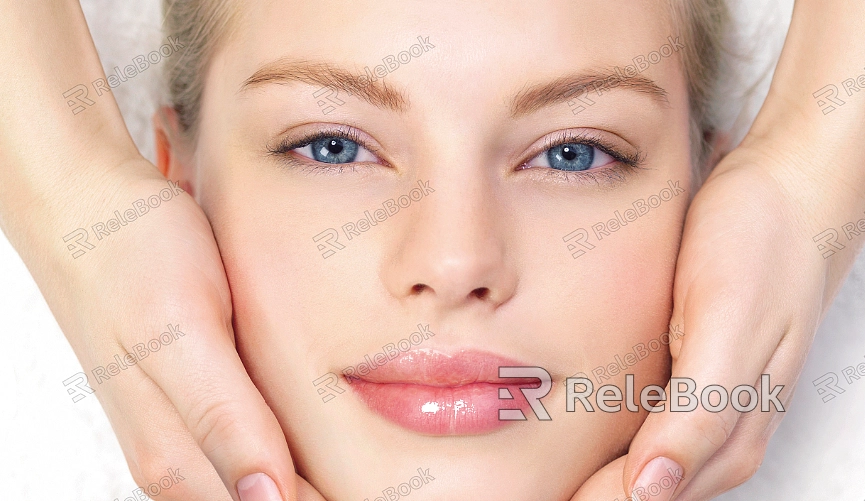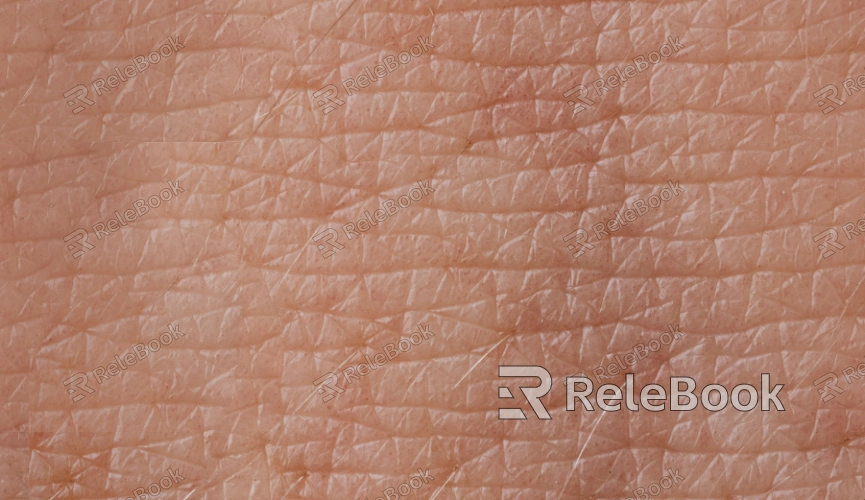How to Flatten 3D Face Textures
Flattening 3D face textures is a crucial step when you need to accurately apply high-quality texture details to the faces of 3D characters. This process allows designers to avoid stretching, distortion, and unnatural effects while painting textures. It's widely used in character modeling, game development, animation production, and virtual reality. Popular software tools like Blender, 3ds Max, Maya, and ZBrush are essential for handling and flattening 3D face textures. In this article, we’ll explore how to effectively flatten 3D face textures in these applications and help designers improve their texture painting and rendering outcomes.

1. The Importance of Flattening Face Textures
The purpose of flattening 3D face textures is to transform a complex 3D model into a 2D plane, allowing textures to be applied correctly on the face’s surface. Common scenarios where this process is necessary include:
Game Characters: In video games, the facial textures need to be accurate and realistic. Flattening ensures details can be drawn on a 2D plane, avoiding texture stretching or distortion during 3D rendering.
Virtual Reality: In VR applications, facial models require high levels of detail and realism. Flattening ensures seamless texture mapping and fine-grained detail.
Animation and Film Production: For animated characters, the quality of facial texture flattening directly impacts the final result, especially for facial expressions and intricate details.
2. Basic Steps for Flattening Face Textures
Before flattening the face textures, it's essential to familiarize yourself with the facial topology and choose an appropriate unwrapping method. Here’s a general flattening workflow:
Choose the Right Flattening Method: Common techniques include automatic and manual unwrapping. Automatic unwrapping works well for simpler models, but for complex facial structures, manual unwrapping provides more control.
Check Topology: Ensure that the face model’s topology is clean. This means verifying that edge loops are smooth and avoiding unnecessary polygons or excessive seams.
Select Flattening Regions: Divide the face model into regions such as the eyes, mouth, nose, and cheeks. Flattening each area separately can make texture painting more manageable.
3. Flattening Face Textures in Blender
Blender is a powerful open-source 3D modeling tool commonly used for texture unwrapping and model editing. Here's how to flatten face textures in Blender:
Enter Edit Mode: First, select the face model and switch to Edit Mode. In this mode, you can manipulate the model’s vertices, edges, and faces.
Mark Seams: Use the Mark Seam tool to define the edges of the face, usually along the ears, neck, and hairline, to prevent texture distortion in the center of the face.
Unwrapping: After marking the seams, select the entire model and use the Unwrap command. Blender offers several unwrapping methods (e.g., Smart UV Project, Unwrap) that cater to different needs.
Adjust UV Layout: Once unwrapped, go to the UV Editor to fine-tune the UV layout. Make sure that the face’s areas are unwrapped logically and without overlap or stretching.

4. Flattening Face Textures in 3ds Max
3ds Max is another popular 3D modeling software, particularly used in industrial design and architectural visualization. Here's how you can flatten face textures in 3ds Max:
Enter Editable Poly Mode: Select the face model and enter "Editable Poly" mode, where you can manipulate the face's geometry.
Mark Seams and Separate Regions: Similar to Blender, you need to mark seams using the "Seam" tool. In 3ds Max, you can use the "Unwrap UVW" modifier to add seams and separate the face into different regions.
Unwrap UV: Within the "Unwrap UVW" modifier, open the "UV Editor" to unwrap the model. Here, you can manually adjust the UV layout to ensure the face regions are properly unwrapped.
Check the UV Layout: After unwrapping, check the UV layout in the editor to ensure there are no visible stretching or overlapping. If issues arise, manually adjust the vertices to correct them.
5. Common Issues and Solutions for Flattening Face Textures
While flattening face textures, several common problems can arise. Here’s how to address them to improve workflow efficiency:
Texture Stretching: If the UV layout is uneven, facial textures may stretch. This can be fixed by manually adjusting the UV proportions to match the actual face regions.
Visible Seams: Improper seam placement can result in visible seams in the texture. To prevent this, place seams in less noticeable areas, such as behind the ears or along the hairline.
Texture Overlap: If different regions of the face have overlapping UV coordinates, textures will not display correctly. The solution is to carefully check the UV layout to ensure no overlapping regions.
6. Post-Flattening Optimization
After flattening the face textures, further optimization is necessary to ensure the final texture is high quality:
Increase Texture Resolution: To ensure facial textures are sharp and detailed in renders, you can increase the texture resolution, particularly for areas requiring more detail.
Refine UV Layout: Focus on areas like the eyes and mouth, where more detail is needed. Adjust the UV layout for these regions to enhance texture quality.
Post-Processing: After flattening, you can use texture painting tools like Substance Painter or Photoshop to refine and add additional details to the unwrapped texture.
By following the steps outlined in this article, designers will gain the necessary skills to flatten 3D face textures effectively in tools like Blender and 3ds Max. This technique helps avoid texture distortion and stretching in character modeling, improving rendering quality and overall results.
If you're looking for high-quality 3D textures, SketchUp models, or 3ds Max resources to create models and virtual environments, Relebook offers a wide range of options to help you achieve exceptional visual effects for your projects.

